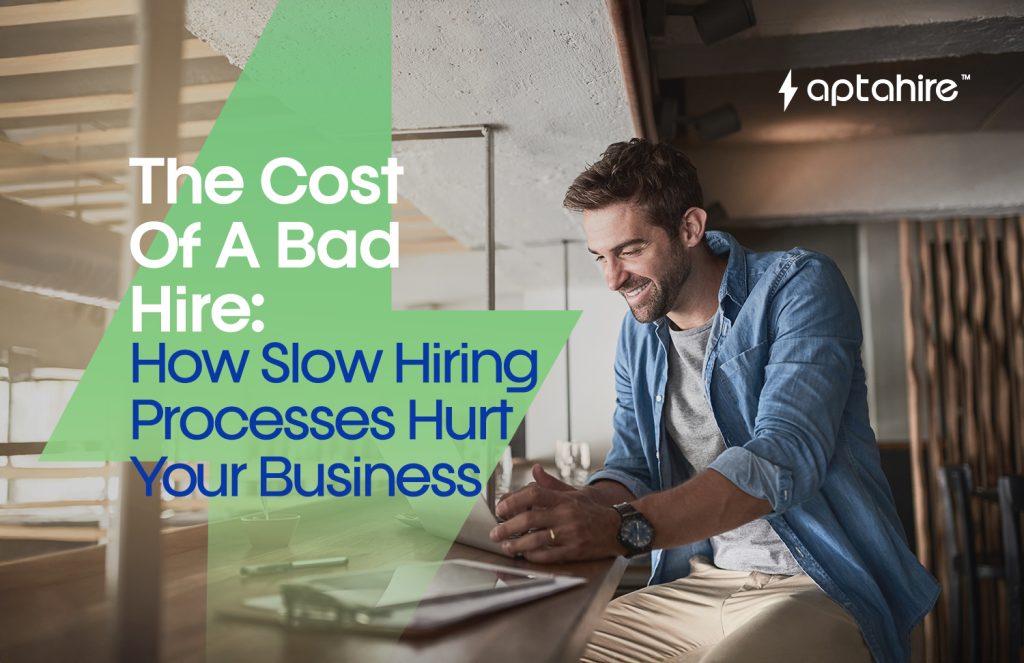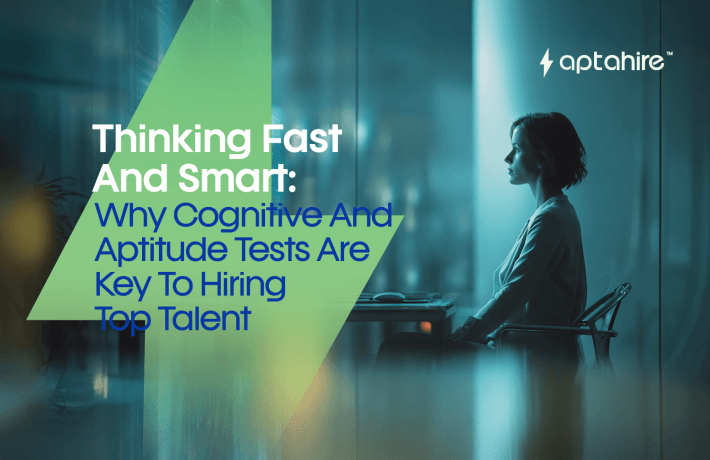The Cost of a Bad Hire: How Slow Hiring Processes Hurt Your Business

Hiring the right person at the right time can be the catalyst that propels your business forward. But the opposite is also true, a bad hire or a delayed hiring process can severely set your business back. In a hyper-competitive environment, companies can’t afford to waste time, money, or human potential due to inefficient recruitment practices.
This blog dives into the true cost of poor hiring decisions, explores why slow hiring processes are riskier than they seem, and offers actionable strategies to improve your recruitment pipeline, backed by real-world stats, case studies, and expert insight.
Why Slow Hiring Is a Silent Business Killer
At first glance, a cautious and slow hiring approach might seem like due diligence. But this tactic often ends up being a silent killer of momentum, talent acquisition, and operational efficiency.
1. You Lose Top Talent
Top candidates are in demand. When your hiring process drags on, you’re not just losing time, you’re also losing the best candidates to competitors. According to research by Robert Half, 62% of job seekers lose interest if they don’t hear back within two weeks of the first interview. Imagine investing weeks sourcing, shortlisting, and interviewing only to lose out to a faster-moving competitor.
In fact, a LinkedIn report shows that the best candidates are off the market within 10 days, yet the average hiring process takes 27 days or more.
2. It Increases the Risk of Bad Hires
Ironically, taking too long to fill a position doesn’t always result in better hires. Teams may become desperate to fill the vacancy, leading to compromised decisions. Long processes often leave interviewers fatigued and less objective, resulting in gut-based hiring rather than performance-based hiring.
3. It Costs You Time and Money
The U.S. Department of Labor estimates that the cost of a bad hire can be as much as 30% of the employee’s first-year earnings. For mid-level roles, this translates to a financial loss of ₹10 to ₹20 lakhs or more when you factor in:
- Recruitment marketing and screening
- Onboarding and training costs
- Loss of productivity
- Decline in team performance
- Administrative costs of termination and rehiring
A CareerBuilder survey found that 74% of employers admit to hiring the wrong person and that these mistakes cost them an average of ₹7–₹10 lakhs per bad hire.
4. Morale and Culture Take a Hit
A poor hire affects more than just KPIs. It creates friction within teams, drags down morale, and places unnecessary burden on existing employees. Good team members may end up managing the consequences of someone else’s poor performance, leading to dissatisfaction and even attrition.
Your strongest employees might end up leaving due to the burnout caused by having to carry the weight for others.
The Real Cost of a Bad Hire: A Scenario Breakdown
Let’s say your company hires a mid-level project manager with an annual package of ₹10 lakhs. The person is onboarded, but within three months, it’s evident they’re a poor fit. Here’s how the financial and productivity cost plays out:
- Loss in productivity due to inefficiency and mistakes: ₹3–4 lakhs
- Recruitment and onboarding costs including internal hours, job ads, screening: ₹1.5–2 lakhs
- Manager’s time correcting work or covering for the employee: ₹50,000
- Team performance impact and delays: ₹2 lakhs
- Re-hiring costs (posting, agencies, interviews): ₹1.5–2 lakhs
Total impact: ₹8–10 lakhs, almost a full year of salary lost.
And this estimate doesn’t include long-term damage like client dissatisfaction, missed deadlines, or a dip in brand credibility.
Real-World Case Study: Zappos
Tony Hsieh, former CEO of Zappos, famously said that bad hires had cost the company over $100 million. They had a practice of offering new hires $2,000 to quit after the first week of training if they felt the company wasn’t the right fit, because the long-term cost of a misfit far outweighed the short-term hiring expense.
This practice not only discouraged those who weren’t truly interested in the company’s culture, but also helped maintain high morale and performance across the team.
What Causes Bad Hires in the First Place?
There are several reasons why organizations make hiring mistakes or delay decisions:
- Unclear job descriptions: Attract the wrong candidates and confuse hiring managers
- Inconsistent interview processes: Create biased or incomplete assessments
- Delayed communication: Frustrates candidates and causes drop-offs
- Over-reliance on resumes: Misses out on potential from unconventional backgrounds
- Gut-feeling hires: Rather than data-backed assessments
- Hiring out of desperation: Especially after long delays
The Link Between Hiring Speed and Quality
Many organizations assume that speeding up hiring leads to bad decisions, but studies show otherwise. Research from LinkedIn reveals that companies that move quickly in hiring are twice as likely to land high-quality candidates.
Why?
- They create a better candidate experience
- They show confidence and decisiveness
- They keep top talent engaged through clear communication
How to Speed Up Hiring Processes Without Sacrificing Quality
1. Leverage AI-Powered Hiring Tools
Platforms like Aptahire help HR teams automate screening, analyze resumes with AI, and even run intelligent video interviews that evaluate facial expressions, tone, and content. These tools offer consistency, reduce bias, and cut screening time by over 60%.
2. Define Clear Hiring Goals and Timelines
Have a defined hiring SLA (service level agreement) for every stage:
- Resume screening: 3 days
- First round: 1 week
- Offer: Within 14 days
This prevents hiring managers from dragging the process indefinitely.
3. Use Structured Interviews
Train your interviewers and use scorecards for candidate evaluation. Structured interviews are proven to be twice as effective as unstructured ones in predicting job success.
4. Improve Internal Communication
Hiring decisions slow down when HR and department heads aren’t aligned. Hold a pre-recruitment meeting to finalize:
- Role expectations
- Evaluation criteria
- Deal-breakers
5. Keep Candidates Engaged
Send regular updates, even if you don’t have a decision yet. Consider using automation tools to send interview reminders, next-step updates, and feedback. A good candidate experience is key to reducing drop-offs.
6. Maintain a Talent Pipeline
Build and nurture a database of previously interviewed or referred candidates. This reduces time-to-fill drastically when new roles open up.
The Long-Term Payoff of Getting It Right
Companies that optimize their hiring processes see long-term gains:
- Better retention: Right-fit candidates are more likely to stay
- Higher productivity: No lag time from poor performers
- Improved culture: The right people elevate team spirit
- Cost savings: Fewer hiring cycles, fewer mistakes
In fact, a Glassdoor report found that improving your hiring process can reduce cost-per-hire by up to 50% and reduce time-to-fill by 60%.
Final Thoughts
In the world of business, people decisions are business decisions. Hiring slowly or hiring wrong both come at a cost, often higher than we anticipate. Today’s talent market rewards speed, clarity, and consistency.
So, instead of trying to “be careful” by dragging out the process, companies must embrace smarter hiring. Use tools like Aptahire, structure your interviews, stick to timelines, and engage candidates proactively.
Because a great hire can change the trajectory of your team.
And a bad one? It could set you back months, or even years.
FAQs
- What is the cost of a bad hire?
A bad hire can cost up to 30% of the employee’s annual salary in direct and indirect costs.
For mid-to-senior roles, this could translate to ₹8–₹15 lakhs in losses depending on the position.
- What is the cost of a bad employee?
Beyond salary waste, a bad employee drains team morale, slows down project timelines, and causes high turnover.
They reduce client satisfaction and productivity, often leaving long-term damage to the company culture.
- What are some of the consequences of poor process selection?
Inefficient hiring systems lead to delays, bad hires, and lost candidates.
It contributes to low diversity, inconsistent evaluations, and higher recruitment costs.
- What is the highest cost attributed to wrong hires?
Loss of high performers due to poor team dynamics.
Brand reputation damage if clients or partners are negatively impacted.
- How can you avoid bad hires?
Use structured interviews and AI-based screening tools.
Collaborate early between HR and hiring managers and clearly define the role.
- Why is fast hiring important?
Top talent is often on the market for only 10–14 days.
Speed improves candidate experience and gives you a competitive edge.
- What tools help reduce bad hires?
AI hiring platforms like Aptahire for screening and interviews.
Talent CRM systems to maintain a vetted candidate pool.



